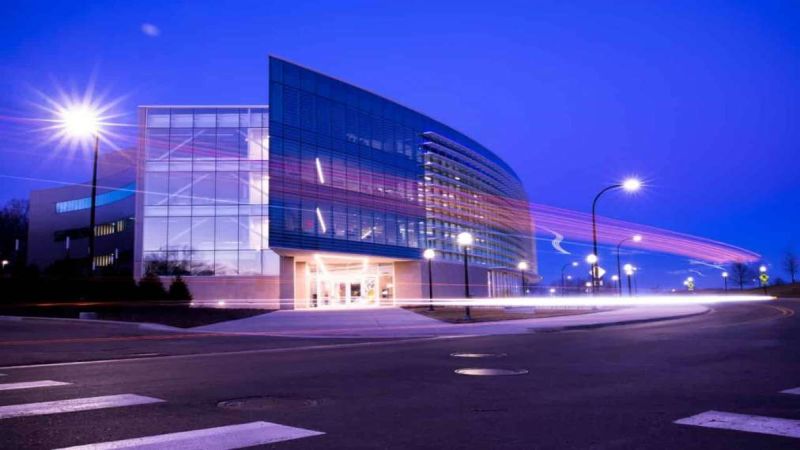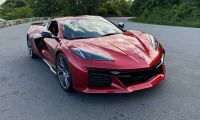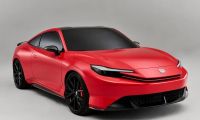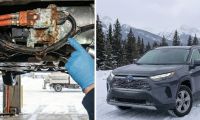Last month, Ford announced the start of what seemed to be an ambitious ride-hailing plan that involved a robot Ford Fusion in the Miami-Dade area. It took the development team a full three years to get to the point where it is ready for prime time. Now, the autonomous vehicle is going to make regular runs in the Miami-Dade area. All you and I have to do is sit and watch the outside world whiz by.
Could Ford Ride-Hail Service Point Way To Future?
At once, this ride-hailing vehicle points the way to a future where cars and computers will do much of the work we currently do. The Miami-Dade service is a significant proof of concept that shows us two things: 1. It shows that autonomous ride-hailing works as it becomes part of the regional infrastructure; and 2. The vital concept shows us the future of cars and computers working for a better life.
In truth, the ride-hailing service vehicle now rolling through Miami-Dade roads had a three-year head-start over the major research infrastructure labs just announced by Ford and the University of Michigan (U-M). The new lab building is a significant commitment of Ford and U-M that sets up what they hope will be a world-class robotics-mobility facility that will bear significant robotics development for the future. U-M and Ford are opening a one-of-a-kind facility to develop robots and roboticists to help make lives better, keep people safe, and build a more equitable society.
The university is opening a 134,000-square-foot, $75 million research complex on its north campus. It will be the new hub of the U-M Robotics Institute. Its first three floors will hold research labs for robots that fly, walk, roll, and augment the human body. The facility will hold a mix of classrooms, offices, and workspaces.
The fourth floor houses Ford's first robotics and mobility research lab on a university campus through a unique agreement. There will be 100 Ford researchers and engineers located on the fourth floor. One of the concepts that will likely receive close study is the Miami-Dade mobility project as a building block to other projects. Indeed, the Miami-Dade experience will likely be just one of the alternatives under study. The robotics piece of the ride-hailing system will probably hold the most excitement for the robotics researchers. Indeed, the robotics lab will be stretching the bounds of robotics.
The Facility Bodes Exciting Change And Work
"To me, this new building brings to life a collaborative, interdisciplinary community that I'm proud to host at Michigan Engineering. Our Robotics Institute upholds an explicitly inclusive climate and a culture that believes in the field's potential to serve as an enabler for all, especially those who have previously been underserved," said Alec D. Gallimore, the Robert J. Vlasic Dean of Engineering, the Richard F. and Eleanor A. Towner Professor of Engineering, an Arthur F. Thurnau Professor and a professor of aerospace engineering. "In this way, we aim to push the robotics field, and engineering more broadly, to become equity-centered—intentionally closing, rather than unintentionally expanding, societal gaps."
The new facility brings together U-M researchers from 23 different buildings and 10 top-10 programs. With the new infrastructure, researchers working on two-legged disaster response robots can test them on a 30-mph treadmill studded with obstacles or on a stair-stepped "robot playground" designed with the help of artificial intelligence, for example.
Biomedical engineers will have access to "earthquake platforms" with force-feedback plates to guide their development of lighter-weight, more efficient prosthetic legs. And, Ford engineers will explore how their upright Digit robots can work in human spaces while taking AVs from robotic computer simulations to on-road testing at U-M's world-class proving ground just down the road.
The new facility brings together U-M researchers from 23 different buildings and ten top-10 programs. With the new infrastructure, researchers working on two-legged disaster response robots can test them on a 30-mph treadmill studded with obstacles or on a stair-stepped "robot playground" designed with the help of artificial intelligence, for example. Biomedical engineers will have access to "earthquake platforms" with force-feedback plates to guide their development of lighter-weight, more efficient prosthetic legs. And Ford engineers will explore how their upright Digit robots can work in human spaces while taking AVs from robotic computer simulations to on-road testing at U-M's world-class proving ground just down the road.
"As Ford continues the most profound transformation in our history with electrification, connectivity, and automation, advancing our collaboration with the University of Michigan will help us accelerate superior experiences for our customers while modernizing our business," said Ken Washington, chief technology officer, Ford Motor Company. "We also will broaden our learning through daily exposure to many robotics activities, such as considering how our Digit robots not only technically can master delivering packages from autonomous vehicles but also become valued parts of our neighborhoods."
Advanced, more diverse and equitable robotics
The research building, designed by HED, echoes the U-M Robotics Institutes' boundary-breaking and inclusive spirit. "This is a truly dazzling facility full of some of the most advanced research and teaching infrastructure in the world. But what I'm most excited about is the people it will bring together and what they will be able to accomplish collectively," said Jessy Grizzle, director of the U-M Robotics Institute, the Elmer G. Gilbert Distinguished University Professor of Engineering and the Jerry W. and Carol L. Levin Professor of Engineering.
If we look at the facility's design for a moment, we will see the lobby is a wide-open atrium surrounded by transparent glass-walled labs. It was designed with outreach in mind, so passersby and visitors can watch research happen in real-time.
Classrooms are set up for hybrid instruction – a feature planned even before the pandemic. U-M and Ford are working together to harness that feature and a more inclusive curriculum in collaboration with historically Black institutions in Atlanta. Students from those schools can enroll remotely in Robotics 101, a pilot course at U-M that doesn't require calculus and levels the playing field for students from lower-resource high schools that didn't offer advanced courses.
World-class labs for human-centered robotics
The U-M Robotics Institute aims to advance human-centered robots—machines and systems that interact with people and move through our spaces, extending the human body and the process of human cognition. New labs enabling this include:
- The Ronald D. and Regina C. McNeil Walking Robotics Laboratory for developing and testing legged robots, with an in-ground treadmill that can hit 31 mph and a 20 percent grade while carrying obstacles. Walking robots could aid in disaster relief and lead to better prosthetics and exoskeletons.
- Rehabilitation lab for advanced prosthetics and robotic controls. Its movable "earthquake platform" can tilt in any direction, while force-feedback plates measure ground contact.
- Before moving to the adjacent outdoor M-Air research facility, a three-story fly zone to test drones and other autonomous aerial vehicles indoors. Autonomous aerial vehicles could perform a safer inspection of infrastructures like windmills and bridges.
- Mars yard, designed with input from planetary scientists at U-M, enables researchers and student teams to test rover and lander concepts on a landscape that mimics the Martian surface.
- Artificial intelligence-designed "robot playground" outdoor obstacle course for testing robots on stairs, rocks, and water, surrounded by motion capture cameras.
- High-bay garage space for self-driving cars, located just down the road from the Mcity test facility, for putting connected and automated vehicles through their paces in simulated urban and suburban environments.
"I don't know of any building like this in the world," said Eric Michielssen, associate dean for research at Michigan Engineering, and the Louise Ganiard Johnson Professor of Engineering in electrical and computer engineering. "These state-of-the-art labs are fitted with some of the most advanced scientific instruments. Couple that with the fact that they will bring together researchers and students from across campus and beyond, and it's clear this will be an unbelievable intellectual environment for the development of next-generation robots."

For Ford, the facility is key to its transformed and modernized research and product development processes aimed at disrupting the transportation landscape. Key research will focus on:
- The future of moving goods more efficiently, as the further pandemic fuels online retail growth. Ford recently purchased several Digit robots, the first commercially available robot with arms and legs, to work with humans and in human spaces.
- Experimenting with a four-legged robot, Spot, to laser-scan plants – helping engineers update the original computer-aided design used to prepare to retool for new products.
- Self-driving vehicles and their role in the future of cities. Members of Ford's autonomous vehicle team will work at the new facility. Ford's approach incorporates purpose-built vehicles into a comprehensive and integrated autonomous vehicle operating system that enables choice, convenience, and value for both people and goods movement.
-
"Autonomous vehicles have the opportunity to change the future of transportation and the way we move," said Tony Lockwood, technical manager, Autonomous Vehicle Research, Ford Motor Company. "As this new technology rolls out, having our Ford team working on campus collaborating with the academic world will help us shorten the time it takes to move research projects to automotive engineering, unlocking the potential of autonomous vehicles."
Robots and robotics for any environment
In addition to the M-Air drone cage and Mcity Test Facility, the college is also home to the Aaron Friedman Marine Hydrodynamics Lab, which houses a 360-foot-long indoor water body for testing robotic and conventional watercraft. And its Space Physics Research Lab develops and tests robotic spacecraft and instruments for deployment across the solar system. Inside the new building, researchers working on machines for each of those environments, and others, can learn from and inspire each other.
The Ford Robotics Building anchors the west end of the Michigan Avenue mobility testbed that begins in Detroit's Corktown neighborhood and runs through Dearborn to Ann Arbor, where Ford and U-M are teaming with other innovators to experiment with potential mobility solutions for the future.

In collaboration with the state of Michigan and others, Ford and U-M are involved in developing this first-of-its-kind corridor for connected and autonomous vehicles that will continue the state's mission to lead smart infrastructure and future development mobility. The initiative's critical goal is to close long-standing gaps in access to public transit and transportation across southeast Michigan.
As noted earlier, it is pretty likely the Miami-Dade experience has laid the groundwork for the future development of mobility in Miami-Dade. Though there's no real nexus for these efforts, the Miami-Dade experience can't help but feel a significant mobility project at the new lab.
Marc Stern has been an auto writer since 1971. It was a position that filled two boyhood dreams: One that I would write, and two that I write about cars. When I took over as my newspaper's auto editor, I began a 32-year career as an automotive columnist. There isn't much on four wheels that I haven't driven or reviewed. My work has appeared in Popular Mechanics, Mechanix Illustrated, AutoWeek, SuperStock, Trailer Life, Old Cars Weekly, Special Interest Autos, etc. Today, I am the Ford F150 reporter for Torque News. I write how-to and help columns for online sites such as Fixya.com and others. You can follow me on Twitter or Facebook. Most of Marc's stories are part of Torque News Ford coverage. Check back again and search for Torque News Ford F-150 news for more F-150 truck news coverage.











